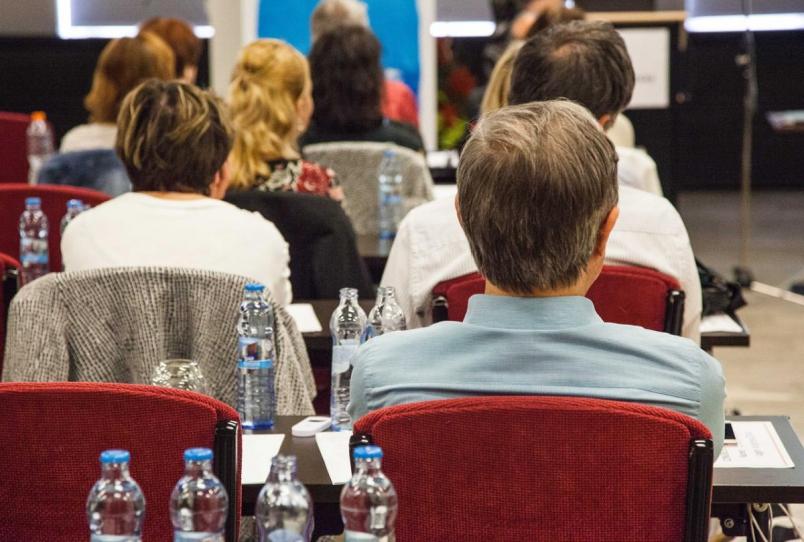
Welcome to the latest post in our Disruption Debate series, where Lars Hyland speaks to some of L&D’s top influencers and thought leaders about the most pressing issues facing businesses today. This time, we spoke to Clive Shepherd, founding director at The More Than Blended Learning Company. Clive has played a key role in the L&D sector for 30 years, with particular interest in technology-assisted learning and communications. We wanted to find out more about Clive’s unique insight into the industry, as well as where he thinks we need to start making changes in our approach to learning.
Sustained change leading to significant change
“Thinking about the last 10 years in L&D, there have been some major changes,” said Clive. “Firstly, there’s the shift from events to processes. It is now widely acknowledged that learning is best conceived as a process that takes place over time, requiring a range of different methods and media. This change is hugely disruptive for some L&D teams. At worst, they have acted like travel agents – instead of booking you into a hotel, they book you onto a course in a purely transactional relationship. And even this intermediary level isn’t needed anymore, as learners can book themselves onto a course directly on an LMS.”
Lars considered how this might affect the outsourcing of L&D services, where the aim is for third-party learning vendors to organise courses for an organisation. However, as Lars said, the model behind this approach doesn’t fit the new reality, as it suggests a lack of understanding about the real business context. Clive agreed, saying that outsourcing only makes sense to introduce efficiencies into the old model of ‘learning as an event,’ which is becoming obsolete.
The best of blended learning

The second major disruption Clive has observed is the move from exclusively face-to-face training to learning remotely. “This is bringing about major benefits in terms of flexibility and scalability,” said Clive, “but there are times when learning face-to-face is still the right choice, when we need to make a big emotional impact on our learners, shift mind-sets and help learners gain confidence.”
Clive compared the choices we make in terms of learning with how we consume media: “We routinely listen to music streamed on our phones, but every now and then we take the trouble to go to a concert or festival. This creates lifelong memories, but it’s not part of our usual routine. Most of our consumption of music, sport and drama is remote and we’re happy with that, but when we go to a live football match or a play, the impact can be profound.” This is why Clive believes that getting the right balance between remote learning and face-to-face learning is essential for the success of today’s learning departments.
“It’s hard to change mindsets with e-learning or videos. Sometimes we need the emotional impact of a face-to-face experience to make a difference.”
Lars gave the example of virtual simulations, where pilots or firefighters may encounter a dangerous situation in a virtual environment for safe practice. Clive agreed, but reflected that while we can take people a long way remotely, there comes a time when learners have to interact with real people, whether that’s a surgeon practising their skills under the watch of an experienced supervisor or a pilot getting into a real cockpit to practise flying a real plane.
From dependency to empowerment
“People now realise that the power to make learning happen is in their hands”
Clive has identified a further disruptive force being the shift from dependency on L&D to determine what learning is done and when to a situation in which learners are empowered to discover content and learn independently.
“Historically, we used to moan that nobody attempted to learn anything if they weren’t told what to do and how. But now, people don’t really need to be told – they just do it. Once you’re empowered, there’s no going back, and employers telling you what to do will feel increasingly weird and patronising.”
Lars highlighted the role of technology in this move towards empowerment. “We’re living in an age in which people can run a business from their mobile phone. If you can do that, a single person is far more capable than ever before in history. And if you can combine this individual power, you begin to challenge the notion of a centralised structure in an organisation.”
However, moving to this model of many empowered learners teaming up to accelerate learning isn’t always plain sailing. As Clive points out, there are often cultural resistances to social learning. “If people are afraid of saying the wrong things, making mistakes or drawing attention to themselves, they won’t feel safe engaging in social learning. It’s a huge waste not to take advantage of social media in a workplace context, but in reality there is some way to go before many organisations can create the safe culture in which learning can thrive.”
The new face of L&D
“There are lots of new roles in L&D today, requiring many new skills. As one example, take curation – it can be enormously valuable to the population you work with to act as a filter to all the content out there that could be useful. As a curator you suggest how people might ‘connect with this person, read this article, watch this video’ – dramatically reducing the time they need to spend trying to find relevant material.”
Clive suggests three areas in which L&D professionals need new skills to stay ahead of the game:
- Facilitation skills
Interacting with learners to support them on their learning journeys and help them to make the most of available opportunities - Consulting skills
Acting more like a doctor or a lawyer – providing an additional perspective on a performance problem rather than simply acting in a transactional ‘course booking’ role - Digital content skills
Making the most of existing and emerging technologies, and staying on top of the latest developments in digital content
Lars said that the idea of a professional e-learning production has now shifted. “We can’t tie activities up in a nice neat bow, ask learners to do them in a specific time window and have them transformed at the other end anymore – that’s not how it works. It’s a continuous experience requiring mistakes and toing and froing – it’s inherently messy.” That’s why, according to Clive, L&D needs to ‘match the messiness’ of real learning and embrace the way people actually learn today – and that means acquiring new skills to help them do that.
Building a sustainable learning infrastructure
Our last talking point was raised by Lars: what exactly does a sustainable learning infrastructure look like?
Clive responded: “We need to be as open as possible to help people access what they identify as useful. Don’t shut doors and make it impossible for people to use their own mobile devices or access YouTube at work. We can’t control everything and we shouldn’t want to.”
As well as this, Clive believes we need to be using systems which make it easy for employers to understand their employees and the gaps in their skills and knowledge. From there, we need to be making it as easy and possible to find and share information, which may include user-generated content, as well as just-in-time performance support, such as web articles, videos and micro-content.
Finally, Clive issued a reminder not to underestimate the power of personal reward in learning. “People like doing courses if they’ll get a personal advantage, such as a badge, a certificate or something that will look good on their CV. But they also have an innate desire to achieve mastery in their work and to fulfil their potential.” This means implementing strategies which enable learners to prove their competence for current and future roles. It’s up to the L&D team of today to prepare learners for their on-going careers, and it is only with new skills and a fresh outlook that we will be in a position to achieve this.
Did you enjoy Clive’s take on disruption in L&D? You can follow him on Twitter @cliveshepherd.You can also share your take on the debate on social media using #DisruptionDebate.


